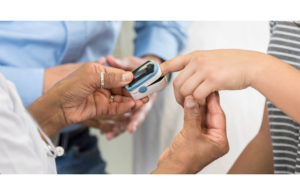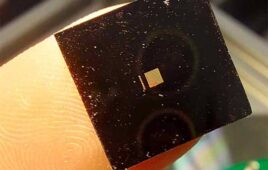
(Image from the American Lung Association)
The laws of physics may be making medical devices biased against people of color, according to a UCLA engineering professor.
Achuta Kadambi, an assistant professor at the UCLA Samueli School of Engineering, published a column in the journal Science about how dataset representation is not the only factor leading to bias in medtech.
Kadambi described how the inherent physics behind medical devices could vary across race and gender, citing several examples of potential physics-based bias. For example, recent research has shown that a pulse oximeter — a medical device typically placed on a fingertip that uses infrared and light beams to measure oxygen saturation of the blood and the pulse rate — is more likely to miss low levels in people with darker skin.
Physical bias has also shown up in the mechanical design of hip implants, Kadambi added. The 3D models used to design hip-joint implants sometimes do not account for the distinct bone structure of female hips, according to a 2009 study published in Seminars in Arthroplasty. This problem was one motivation for the development of gender-specific implants, Kadambi said.
Kadambi’s motivation to write this piece stemmed from an airport incident when he noticed he had difficulties triggering light-sensing soap, faucet and towel dispensers, which he attributed to his darker complexion and the physics of light. While these factors might result in mere inconvenience when using a light-sensing faucet or towel dispenser, Kadambi said they might present life-threatening consequences in critical application domains such as medicine.
Kadambi offered a few ideas on how to prevent these unintentional biases and improve equity in medical devices.
He suggested that medical device journals require authors to quantify sample fairness in experiments. Scientists are currently only required to provide statistics relating to a device’s performance without the human factor. He also suggested recalibrating how medical device performance is measured to determine how existing devices perform when a quantifiable metric, such as the race or ethnicity of a population, is included in evaluating the equipment.
Masimo founder and CEO Joe Kiani told MassDevice in December that Masimo is researching how to improve accuracy in pulse oximetry, translating directly into improved precision and bias on all subjects, regardless of skin tone. Internal studies have shown the company’s RD SET series sensors have similar accuracy on both light and dark pigmented subjects, Kiani noted.
Kadambi, who specializes in computational-imaging technologies and their applications, has recently pivoted his research to explore the issue of fairness in the imaging field. A recent National Science Foundation Career Award will fund his research into the physics of light and how it interacts with variations in skin types and colors.
Kadambi holds a Ph.D. from the Massachusetts Institute of Technology (MIT) and joined UCLA in 2018. He holds faculty appointments in both the electrical and computer engineering department and the computer science department. He has received many honors and awards, was elected as a senior member of the 2020 National Academy of Inventors and was named one of Forbes’ 30 Under 30 class of 2019 in the science category. He is also the co-founder and chief scientist for Akasha Imaging, a venture-backed startup that designs camera hardware and artificial intelligence to enhance computer vision.




